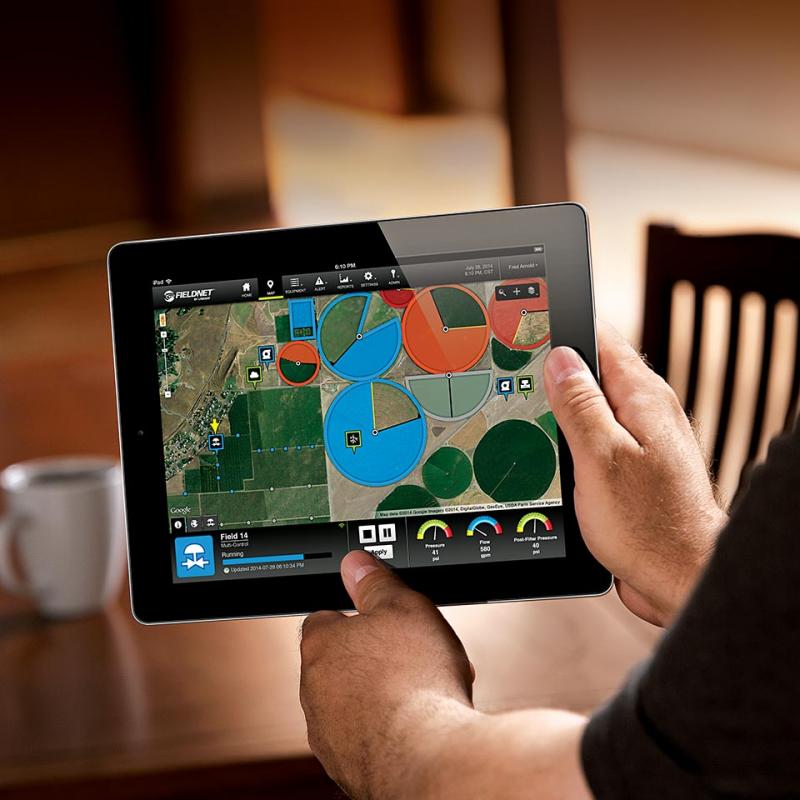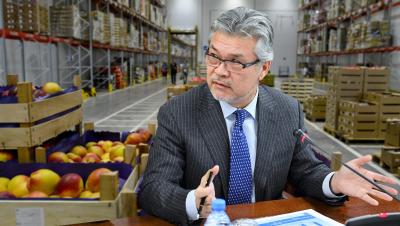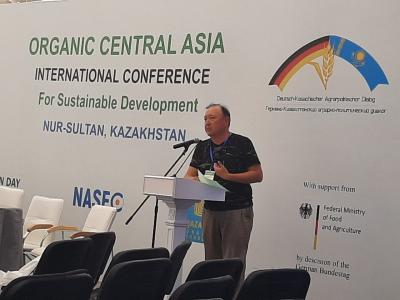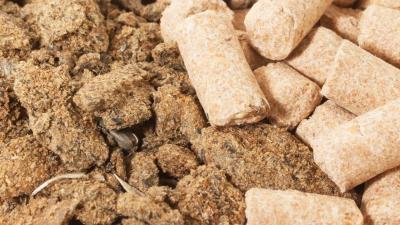
Experts have long recognized irrigation as one of the key factors in increasing yields, especially for vegetable crops. By replenishing soil moisture deficit, irrigation systems help farmers to increase productivity. Yuriy Babintsev, the sales manager of vegetable and irrigation equipment of Eurasia Group Kazakhstan, told World of NAN about how irrigation affects different crops and what consequences can stem from mistakes in the process of technology implementation.
Yuriy Vitalyevich, does irrigation have such a strong impact on increasing crop yield? Can you give examples for some crops?
- Certainly, in many ways, crop yields depend on irrigation. Growing crops without irrigation is always risky. This is especially true for vegetable crops. The use of irrigation makes it possible to obtain guaranteed, stable and high yields. There are several examples of how the technology affects the yield. Take potatoes, for example. On rainfed land the yield will be 12-18 tons per hectare, and with irrigation you can get 35-45 tons. With carrots there is a high probability to get no yield at all without irrigation. And even if there is, it will most likely be 5-10 tons per hectare, whereas with irrigation we will get up to 70-90 tons. Wheat can give the yield of 10-15 quintals per hectare on the rainfed area, and with irrigation we will get 2 times more, up to 30 quintals. It is the same for other crops. Corn on rainfed land may give 40-120 quintals per hectare, and with irrigation it may give 270-330 quintals. If alfalfa gives 5-10 tons in one or two mowing, with irrigation in three or four mowing it is real to get up to 15-25 tons per hectare. This is not the data of any research, but many years of observations from my own experience.
And how does irrigation affect soil fertility?
- Very favorably. Well-moistened soil will reward the farmer with a rich harvest in gratitude. It is scientifically proven that under the influence of water chemical and microbiological processes occur in the soil invisible to the eye. Irrigation water, which is a source of life for plants, is also a conductor of nitrates. With the help of water they reach the root system faster and nourish it. Together with moisture, the soil is supplied with plant residues and organic matter. Thanks to irrigation, soil bacteria and microorganisms that are beneficial to the soil are activated. And carbon dioxide contained in irrigation water will dissolve salts harmful to the root system. In moistened soil, in addition, there is a specific resistance to plowing.
As far as we know, over-watering is no less problematic than under-watering. Can improper organization of the irrigation process harm the plants?
- There are some cases when crops can really suffer. Unregulated irrigation, such as irregular irrigation schedules, excessive or insufficient water, can interfere with the positive effects of irrigation on the soil and its fertility. For example, an excess of water increases leaf mass, which in turn creates conditions for fungal diseases. With above-ground irrigation methods, most often together with water, silty and colloidal particles from the soil surface get into the deeper layers of the soil. These formations further seriously interfere with the flow of both irrigation water and air, not to mention micronutrients. The above factors contribute to soil erosion. The overabundance of groundwater can also lead to salinization and swamping of the soil.
How is the required amount of water for crops determined?
- Many factors influence the necessary volume of irrigation: this type of soil, external precipitation, depth of fertile layer, topography of the fields, climatic conditions. The timing of sowing and growing season of the crop is necessarily taken into account. The agronomist decides on the irrigation rate in each case. Today the market has a lot of equipment for irrigation, which facilitates the entire process through automated systems. For example, to minimize errors in making decisions about the rate of irrigation, there is a technology called Fieldnet, which allows remote control. The system determines the rate, optimum time and area of irrigation based on the above factors. Fieldnet Advisor technology allows for automated irrigation management on a case-by-case basis. The system includes a solar panel, sensors for radiation, rain, air temperature, leaf moisture, wind speed, etc.
Yuriy Vitalievich, we know that you have extensive experience in selling irrigation systems in Akmola and North Kazakhstan regions. Considering the climatic characteristics, what kinds of irrigation systems are used in these regions?
Sprinkler irrigation and drip irrigation are most common in Akmola region and NKRs. For the process of sprinkler irrigation stationary circular irrigation machines are used. In this case the area of irrigation by one machine can range from 30 to 130-150 hectares (recommended by the manufacturer). Agrarians also use sprinkler machines of drum type. Usually, these machines are used for irrigation of vegetables - carrots, table beets and potatoes. The technology of drip irrigation is used on small areas for growing vegetables where there is no sufficient source of water - rivers, lakes, dams, and the water is supplied to the storage tank from underground wells.
Can we talk about an increase in the area of irrigated land in the country as a whole?
- Yes, it can be noted that many domestic farmers from different regions of the country became more active in the direction of revival of irrigated areas. Last year, the Ministry of Ecology reported that there were 1.5 million hectares of irrigated land in Kazakhstan. The leaders in terms of irrigated area are traditionally the southern regions. These are Turkestan, Almaty, Kyzylorda and Zhambyl provinces. Meanwhile, it should be noted that the volume of products grown on irrigated lands is on average twice as much as compared to non-irrigated areas. Now agrarians introduce innovative technologies, both for vegetable crops, grains, fodder crops and corn. Significant support from the state positively affects the interest of farmers. The government subsidizes the purchase of irrigation equipment in the amount of 50% of the cost and infrastructure in the same amount of 50%. In addition, the purchase of equipment is possible both under direct contracts and in leasing through financial institutions. According to expert forecasts, the areas of irrigated land in the country will only grow. Consequently, if the right technology is used, the volume of agricultural products produced by farmers will also increase.
Yuriy Vitalyevich, thank you for the interview!












































Обсуждение